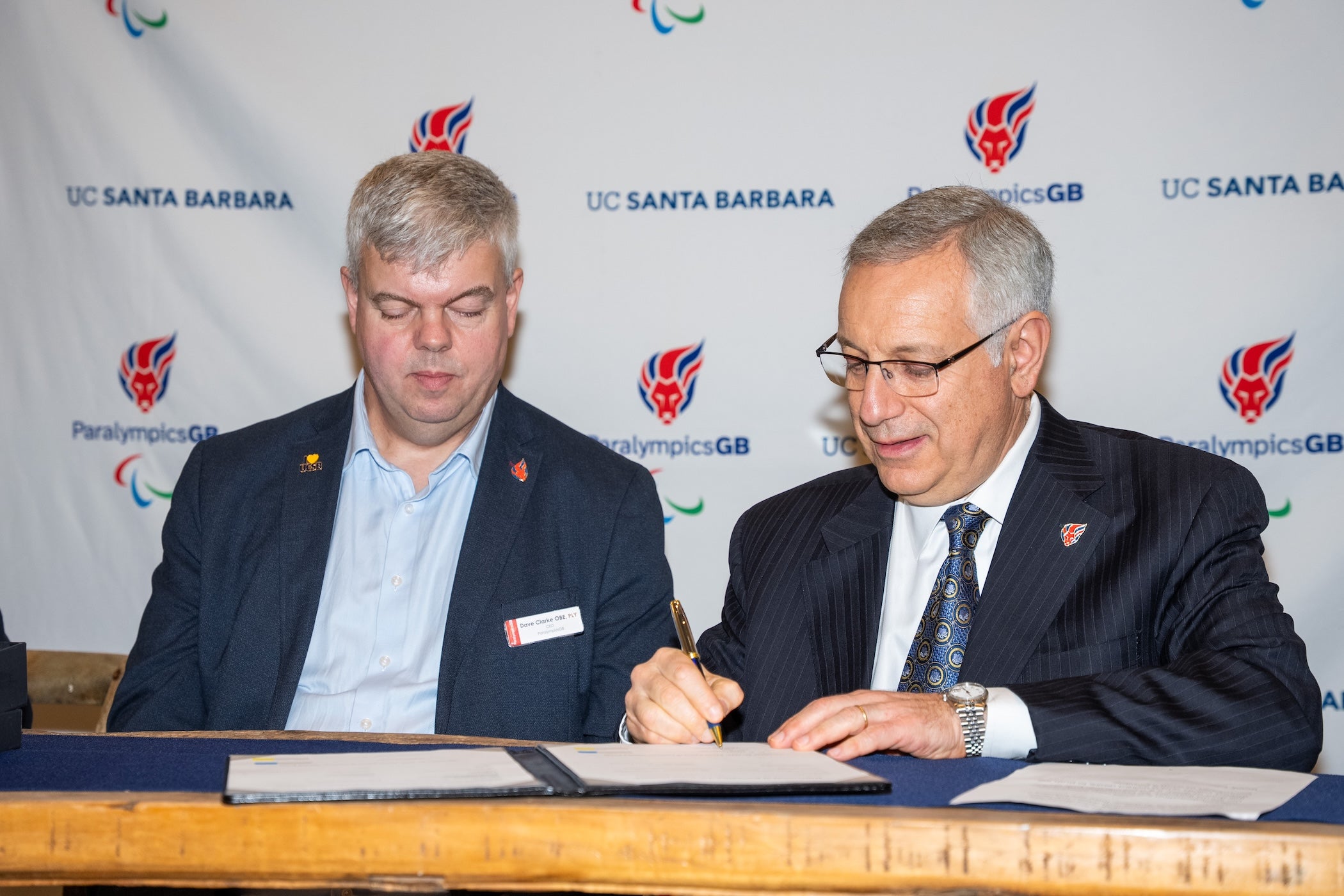
‘Space-Time Versus the Quantum’
The timing of the release of “Interstellar” could not have been more fortuitous. The current blockbuster explores the space-time continuum as well as wormholes, black holes and the fifth dimension — topics dear to Joseph Polchinski’s heart.
A professor of physics and a permanent member of the Kavli Institute for Theoretical Physics, Polchinski was named UC Santa Barbara’s 2014 Faculty Research Lecturer, the highest honor bestowed upon professors by their peers in recognition of extraordinary scholarly distinction. Polchinski will deliver his lecture, titled “Space-Time Versus the Quantum,” on Thursday, Dec. 4, at 6 p.m., at the campus’s Corwin Pavilion. A reception at 5 p.m. will precede the lecture and both are open to the public.
“I think this is a fun subject for a public lecture and will be interesting to a wide audience,” Polchinski said. He will discuss the search for a unified theory of the laws of physics and the difficulty of reconciling two of the main pieces: quantum mechanics, which governs the very small; and general relativity, which governs the very large. In particular, he will address how in 1975 Stephen Hawking discovered a paradox, which seems to suggest that at least one of these theories must give way.
According to Polchinski, physicists have puzzled over this ever since. The latest incarnation of this paradox is the black hole firewall, discovered at UC Santa Barbara in 2012, which claims that an astronaut falling into a black hole has an experience very different from what general relativity predicts.
Polchinski earned his Bachelor of Science in physics from the California Institute of Technology in 1975 and his Ph.D. in physics from UC Berkeley in 1980. After two-year stints as a research associate at the Stanford Linear Accelerator Center and at Harvard, he joined the faculty at the University of Texas at Austin in 1984 and moved to UC Santa Barbara in 1992.
Polchinski’s contributions to theoretical physics include a modern formulation of renormalization theory and some of the original work on the string landscape. He is best known for his discovery of D-branes, extended structures that appear to be central to the mathematics and physics of string theory. He is also the author of a widely used two-volume text on string theory.
Among his many honors, Polchinski has held a Hertz Foundation Graduate Fellowship, a National Science Foundation Postdoctoral Fellowship and an Alfred P. Sloan Fellowship. He was elected a fellow of the American Physical Society in 1997 and of the American Association for the Advancement of Science in 2012. Polchinski is a member of the American Academy of Arts and Sciences and of the National Academy of Sciences. He is the recipient of numerous awards, including the American Physical Society’s 2007 Dannie Heineman Prize for Mathematical Physics; the 2008 Dirac Medal of the International Center for Theoretical Physics, Trieste; and the Physics Frontiers Prizes in 2013 and 2014.



